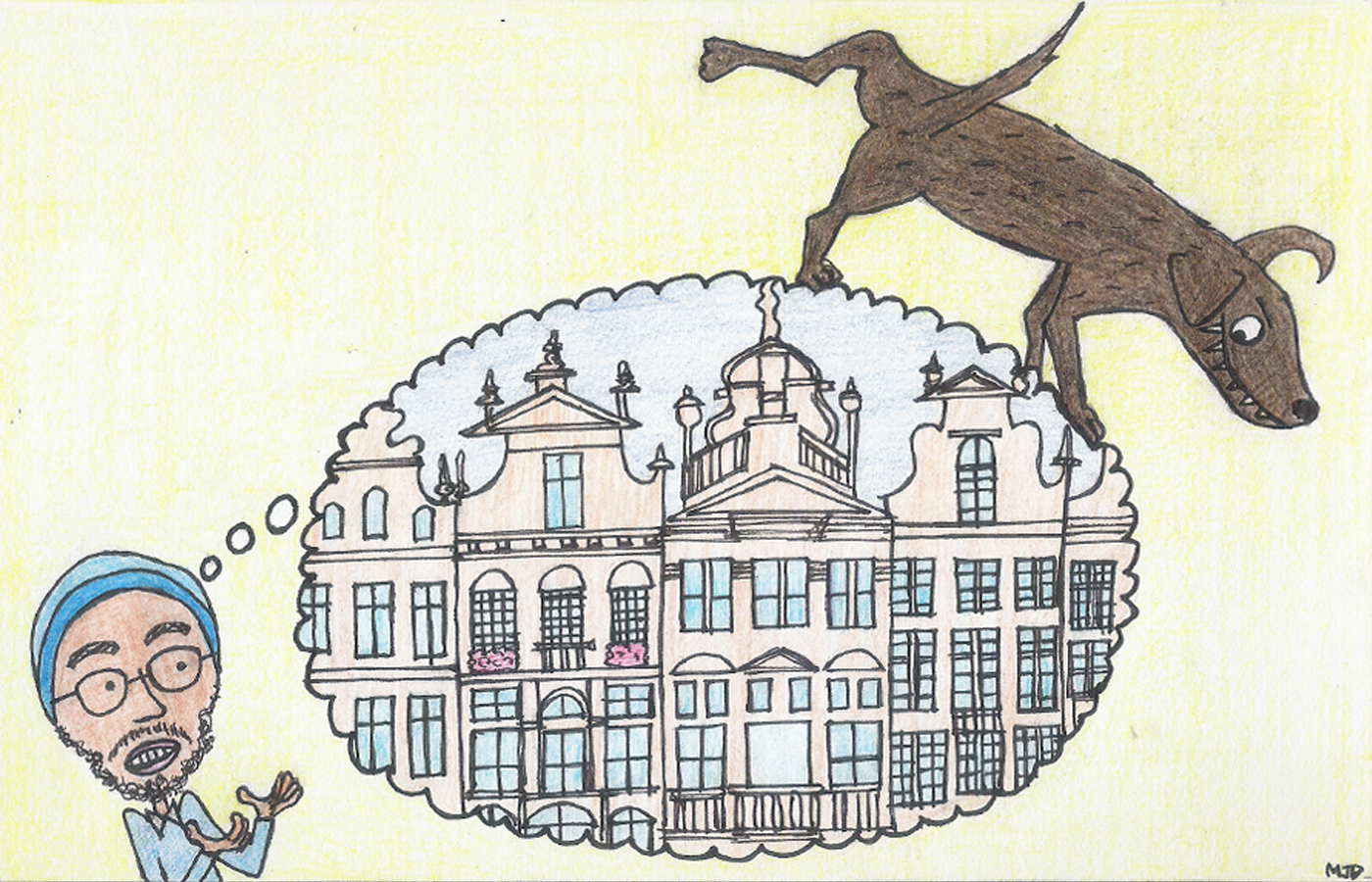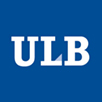Coming from a city like Kathmandu – where urban planning is all but absent, the streets are often piled high with mounds of trash, public transport is erratic and unmanaged and the cityscape is a hodgepodge of the garishly modern and the classically traditional – Brussels, to my chagrin, was not very different.

Illustration by Maitri Dore, Cohort 09
In the very first moments of my arrival in Brussels, I witnessed the near collision of two cars, one driven by an elderly man who screamed obscenities in French as he roared past. On the streets in Ixelles, the sidewalks were covered in canine excrement, forcing one to walk as if in a minefield. The cityscape was confusing, the street layout disorienting and the weather increasingly capricious. In less than a week, my premeditated image of the capital of Europe – spotlessly clean, fastidiously ordered and irredeemably beautiful – shattered.
In the span of the five-or-so months that I have spent here, I have come to realise, under the tutelage of some fine teachers at the VUB and ULB, that Brussels (and by extension, Belgium) is a city wreathed in shades of grey, much like its perpetually overcast weather. The European city of my Nepali imagination, one that had never set foot in Europe before and was born solely out of media images, doesn’t really exist. There is no ideal. No city (or country) really has its shit together; complexities abound. A city like Brussels is especially emblematic of contradiction and distortion, with its seemingly explicit divide along language lines that gets murkier and murkier the more local you go. Here, bureaucratic efficiency (an oxymoron, many might say) has been sacrificed on the altar of inclusivity.
The image of the fabled European city of lore further splintered piece-by-piece, during excursions across Brussels and to cities like Charleroi, Antwerp and Mons. There, the contradictions that typify the urban were laid bare. More shades of grey. Segregation in Antwerp, post-industrial development in Charleroi and mega-events in Mons. No easy answers as to what is right and what is wrong. A critical inquiry does not always provide answers; often, it just raises more questions.
The Antwerp excursion in particular was brilliantly choreographed. Starting with the middle-to-upper socio-economic class segregated in the suburbs then onto the lower socio-economic class in the public housing projects and finally ending with ethnic segregation in neighbourhoods of arrival, Nick Schuermans led this walk across Antwerp, exposing the various connecting and contradictory threads that underlie the urban fabric of the city. Segregation, which I had previously thought of in purely negative valence with images of apartheid and ghettos, was not so easy to take a stance on anymore. In Antwerp, ethnic enclaves where new immigrants receive support and services provided a counterpoint, complicating easy black-and-white distinctions with a murky grey picture where nothing was as it seemed.
Back in Brussels, for an Urban Analysis class, I was part of a group assigned to the neighbourhood of Anderlecht Centre-Wayez, where differences were manifold. Wayez is a diverse place, going by the numbers and by simple observation. Through ethnography and interviews, our group came up with a fairly odd picture. While there were many public bodies in the neighbourhood working to promote social cohesion among the myriad groups that inhabited Wayez, the groups themselves seemed fairly socially segregated. By happenstance, I came across a Nepali night-shop owner, who disliked the neighbourhood for its crime and delinquency. She made me coffee and biscuits while fending off a man with a carton of stolen ice-cream to sell and brandishing a thick piece of wood that she claimed to use to beat off thieves and robbers. On the other end of the spectrum, our group also came across an ethnic Moroccan reformed hooligan, who admitted to getting into fistfights in his younger days and for whom ‘gun fights’ were a normal part of life in Wayez. Now, he is a boxing instructor and spends his days at an Albanian cafe, drinking coffee and hailing passersby, all of whom appear to know him.
Both these characters, as disparate as they were, made up the life-blood of Wayez, but there is almost no instance where they would interact with each other outside of a commercial exchange. They had their own roles to enact and their own identities to perform. The Nepali lady admonished me for being underdressed in the cold while the Moroccan man advised that we quit smoking and take up exercise if we wished to live longer. People, like cities, defy easy categorisation; everyone is large, everything contains multitudes.
These anecdotes are perhaps themselves contradictory and themselves a confusing amalgam of experiences. There are no definites, no points of certainty. To allow oneself stability would be to eschew all the fluidity that a city has to offer. In cities, everything is always in flux. In Brussels, here a pile of dog faeces, there a homeless woman sitting in a wheelchair and knitting a sweater. Here, an imposing armyman with a massive gun, there two young men walking the Bourse with open beers in one hand and a joint in the other. Brussels’ sense of place emerges from these seeming contradictions, that liminal space in between the here-and-there, between the this-and-that. Brussels, like all cities, is never one thing; it is seemingly always in a process of becoming.
In Brussels, under perpetually steel-grey skies, what became clear was that cities exist in between. To paraphrase Louis Althusser, by way of Doreen Massey, there is no point of departure, not for thought and neither for philosophy. Perhaps this rings true for us 4CITIES students, as we are in a constant state of flux, never really arriving and never really departing. We appear in the middle of things, smack in the middle of a bustling city that is alive in ways beyond comprehension in so short a semester. And then we leave.


